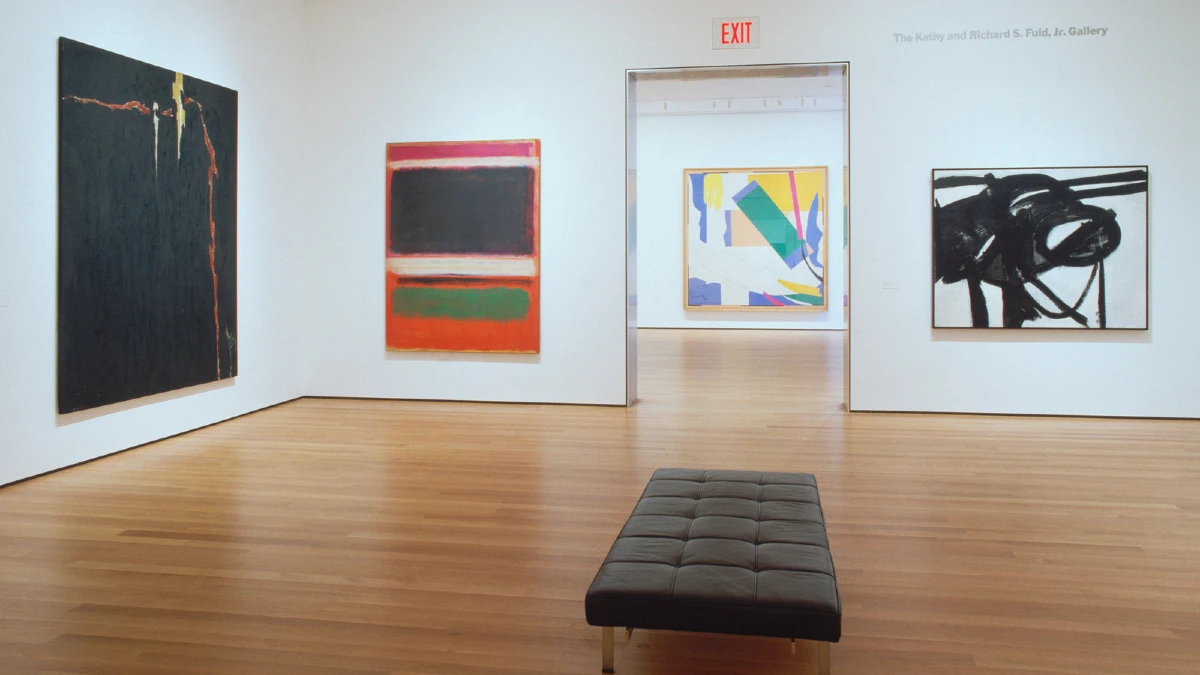The Museum of Modern Art (MoMA) is a famous contemporary museum in New York City, drawing over 7 million visitors annually.
With its vast collection of over 150,000 artworks, MoMA hosts an impressive range of masterpieces by famous artists like Van Gogh, Picasso, Warhol, and more.
Its five floors offer diverse artistic experiences, from vibrant paintings to thought-provoking sculptures.
Seasoned art enthusiasts and casual visitors must see these artworks at MoMA.
Learn about the must-see artworks at MoMA and make the most of your trip to the museum.
Le Demoiselles d’Avigon by Pablo Picasso
Picasso’s groundbreaking “Les Demoiselles d’Avignon” marks a seismic shift in artistic conventions, boldly challenging traditional notions of form and perspective.
With its fragmented figures and primal energy, this original work signals the dawn of Cubism and the avant-garde movement.
The Spanish artist created this beautiful oil painting artwork in 1907, showcasing five female prostitutes in a brothel on the streets of Barcelona, Spain.
Picasso created the lady figures in the painting in a non-conventional and confrontational way, with disjointed and angular feminine figures.
Also notable in this iconic MoMa painting is the facial expression of the figures. While some carry an Egyptian demeanor, others boast an Asian-style and African mask-like appearance.
Location: Part of the permanent collection at MoMA NYC
The Persistence of Memory by Salvador Dali
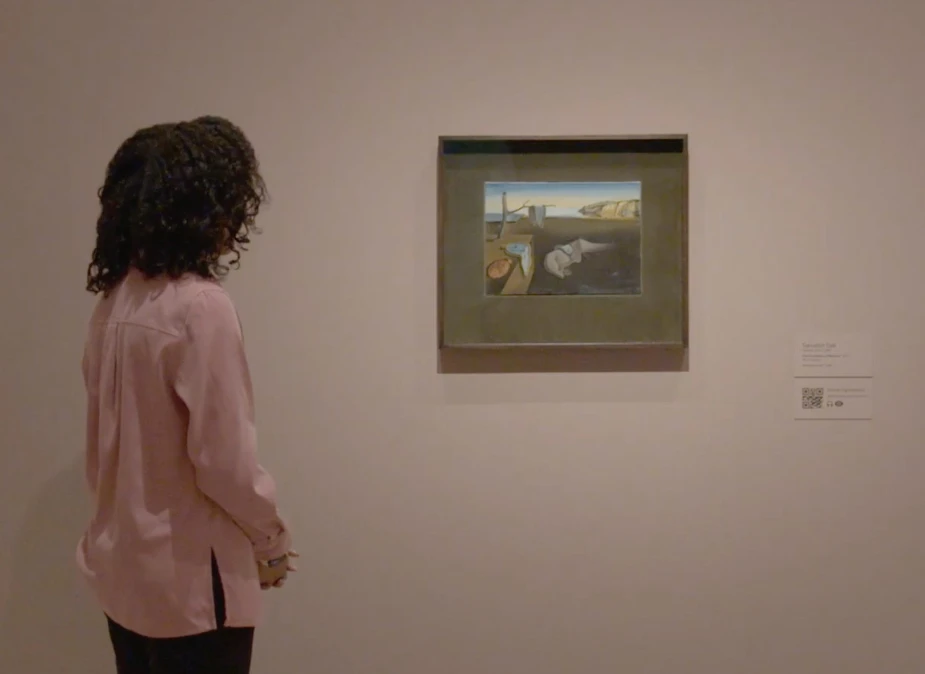
This MoMA painting remains a surreal force, its melting watches and eerie landscapes inviting viewers into the labyrinth of the subconscious.
With its haunting imagery and existential themes, Dali challenges our perceptions of time and reality and is among the most notable works of surrealism.
The artwork was initially shown at Julien Levy Gallery in 1932. However, after receiving it from an anonymous donor, it has been at the MoMA NYC since 1934.
The painting is also sometimes called by other descriptive names like “Melting Clocks,” “The Soft Watches,” and “The Melting Watches.”
The names suggest what viewers can expect in this painting- melting figurines. Head to MoMA and take a closer look at this masterpiece.
Location: Gallery 157
Campbell’s Soup Cans by Andy Warhol
Warhol’s “Campbell’s Soup Cans” represents the democratization of art, transforming everyday objects into popular culture icons.
With its bold repetition and graphic simplicity, Warhol challenges notions of high and low art, inviting viewers to reconsider the boundaries of artistic expression.
This painting, also called the “32 Campbell’s Soup Cans,” was produced between November 1961 and June 1962.
The artwork consists of 32 canvases, each measuring 20 inches in height and 16 inches in width. Each canvas also contains a painting of Campbell’s Soup Can.
Each canned soup represented the varieties the company offered around that time.
Location: Gallery 412
Vir Heroicus Sublimis (1950-51), by Barnett Newman
Barnett Newman’s monumental canvas, “Vir Heroicus Sublimis,” commands attention with its towering presence and profound silence.
The Latin title of the painting translates to “Man, heroic and sublime,” and it was Newman’s largest painting at the time.
Measuring nearly 8 feet tall and over 17 feet long, this painting invites viewers into a contemplative dialogue with Newman’s exploration of existential themes.
Standing before this masterpiece, one is enveloped by awe and introspection, experiencing the sublime power of Newman’s artistic vision.
Location: MoMA NYC, Floor 4, 402, The David Geffen Galleries
Starry Night by Vincent Van Gogh
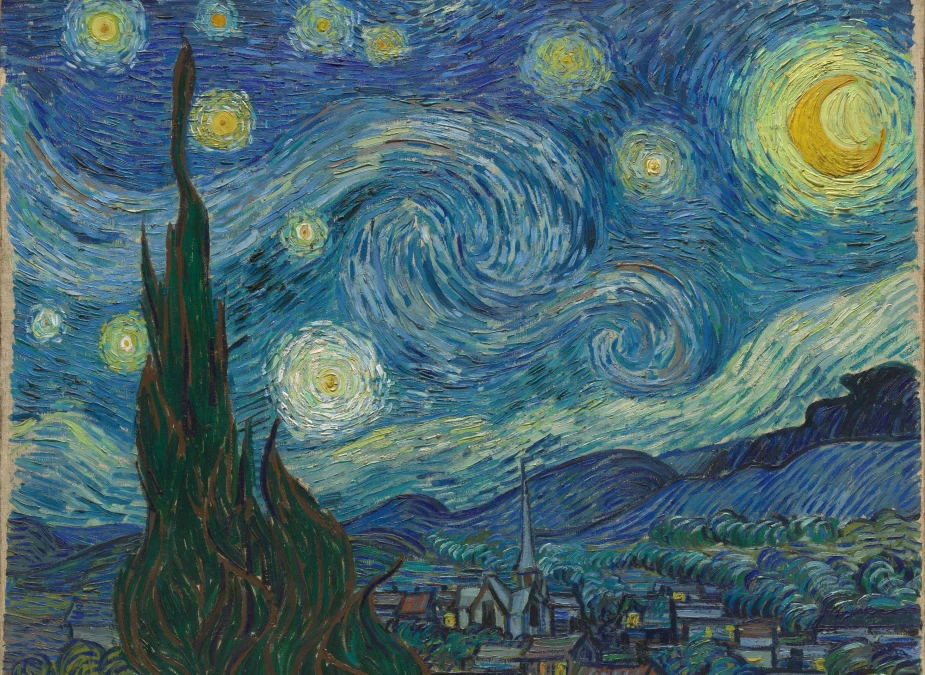
Van Gogh’s “The Starry Night” needs no introduction. Its swirling celestial spectacle captivates viewers with its raw emotion and turbulent beauty.
As you gaze upon the luminous sky and swirling stars, you’ll glimpse into the artist’s tumultuous psyche, transcending the confines of his asylum walls.
This post-impressionist work by one of the world’s most noted artists is a must-see at MoMA.
Created inside his asylum room at Saint-Remy-de-Provence in 1889, this oil canvas showcases the storm going inside Gogh’s mind as he battled mental health issues.
Location: Gallery 501
Broadway Boogie Woogie by Piet Mondrian
Broadway Boogie Woogie by Piet Mondrian is a famous abstract painting inspired by New York City’s grid and jazz music.
It features vibrant, intersecting lines and colorful squares. Mondrian completed the painting in 1943 after he moved to New York in 1940.
One of the most famous MoMA paintings, Broadway Boogie Woogie, is also an oil canvas painting.
Featuring bright-colored abstract square boxes, it was inspired by real-life examples like Manhattan’s city grid and boogie-woogie, an African-American Blues Music that Mondrian loved.
Location: Gallery 512
One: Number 31, 1950, by Jackson Pollock
Pollock’s “One, Number 31, 1950” pulsates with energy and dynamism, its intricate web of paint defying conventional notions of composition and form.
This painting from 1950 is one of the most famous works from Pollock’s Abstract Expressionist drip-style works.
A private collector owned this renowned painting until the Museum of Modern Art purchased it in 1968 and put it up for display at the Museum.
Today, it is one of the most famous MoMA paintings.
Location: Gallery 401
The Lovers by Rene Magritte
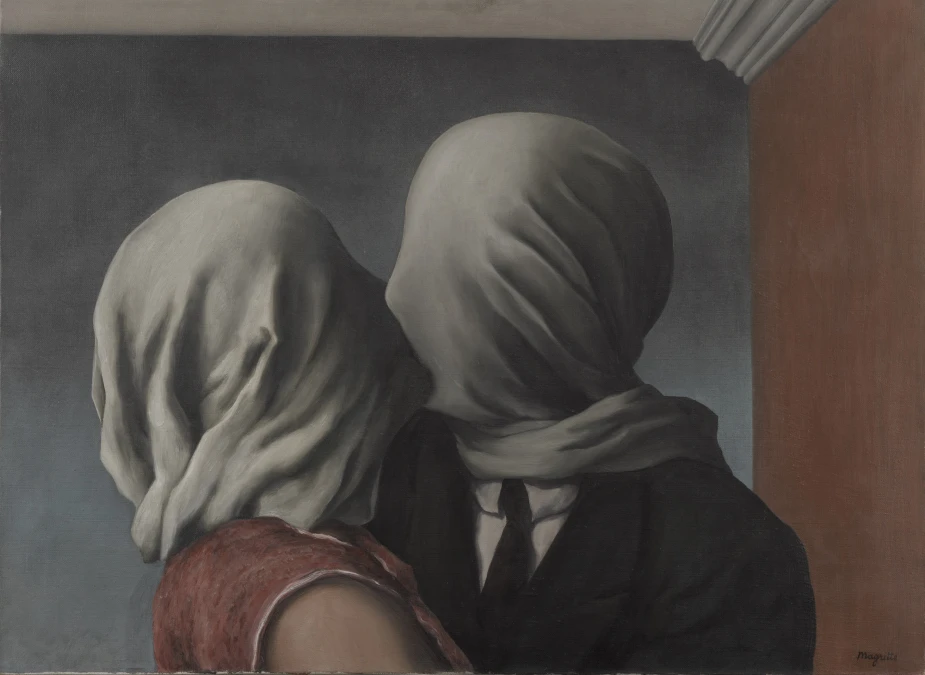
The Lovers (Les Amants) is a 1928 surrealist painting by René Magritte.
It depicts two people kissing with their faces covered by white cloths, symbolizing hidden identities and frustrated passion.
The painting looks very simple at first. However, upon reflection, the viewers feel compelled to understand the depth of the artist’s vision.
One of the most famous MoMA artworks, The Lovers, showcases how two people who are deeply in love remain together even if they are physically separated.
The use of solid, deep colors like red and black showcases the lovers’ sad predicament against the infiniteness of the world behind them.
Location: Gallery 517
Self Portrait with Cropped Hair By Frida Kahlo
Explore one of the best MoMA paintings, Frida Kahlo’s self-portrait with cropped hair, in which the noted artist sheds her feminine attributes and adopts a new look.
Frida Kahlo sits alone, holding scissors and a clump of hair. This image symbolizes rebellion and personal transformation, questioning the meaning of cutting off.
The word “cropped hair” in the artwork’s title reinstates the emphasis on her changed hair length. This shows how significant it was to her and, in general, to women.
The painting showcases Frida Kahlo in a stunning suit on a golden chair, chopped hair on the ground and something written on the wall behind.
Location: Gallery 517
Dance by Henri Matisse
Commissioned by the Russian businessman and arts patron Sergei Shchukin, Dance is a full-scale in oil.
Henri Matisse created Dance (I) in 1909 as a study for a commissioned painting. The final version and its companion piece, Music, are housed in the Hermitage Museum.
The composition of the dancing figures is often considered a critical point in the artist’s career and the development of modern painting.
Location: Gallery 506
Other noteworthy works
Andrew Wyeth – Christina’s World, Lobby
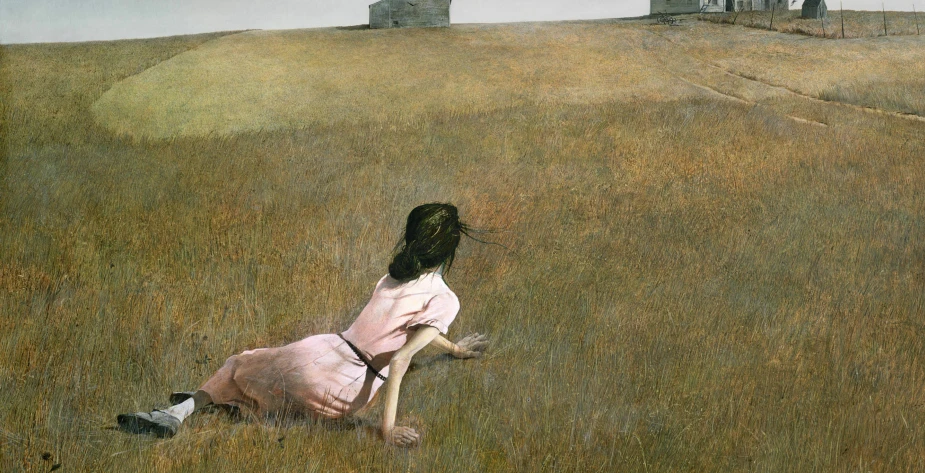
Wyeth’s “Christina’s World” epitomizes the triumph of the human spirit, portraying his neighbor’s poignant journey through a barren landscape.
As Christina crawls towards her destination, Wyeth invites us to reflect on resilience and perseverance in adversity.
In this MoMA painting, a woman in a pink dress is seen lying in a grassy field from behind. The grass is different shades of green, and four cottages are seen in the backdrop.
The young woman in the painting appears to be in repose, but her upper body looks stiff and alert.
Location: MoMA, Floor 5, 523, The Alfred H. Barr, Jr. Galleries
Untitled (1964), by Kazuo Shiraga
A recent addition to MoMA artwork, Kazuo Shiraga’s “Untitled” exemplifies the artist’s daring approach to abstraction through his unique “foot painting” technique.
With bold red planes of color and dynamic brushwork, Shiraga’s masterpiece exudes a sense of controlled chaos, inviting viewers to immerse themselves in its vibrant energy.
Shiraga was a member of a Japanese group known as “Gutaai,” which abandoned brushes and strokes after World War II.
The Gutaai artists focused more on action and process; this MoMA artwork is a testament to that practice.
It does not have figures or objects, just colors that appear in random patterns.
Location: Gallery 405
Contents
Roy Lichtenstein – Drowning Girl, Gallery 19
Lichtenstein’s “Drowning Girl” captures the melodrama of comic book imagery, its bold colors and Ben-Day dots evoking the vibrancy of pop culture.
As Lichtenstein blurs the lines between high and low art, he invites us to reconsider the significance of mass-produced imagery in contemporary society.
Many of Lichtenstein’s paintings were inspired by comic books. This must-see MoMa artwork, too, samples a page from #83 of Secret Hearts.
It shows the image of a woman drowning who refuses to get help. Her refusal is depicted as a dialogue shown in comic books.
Explore this painting from up close and see if you get comic book feels from the painting, too.
Location: Gallery 19
